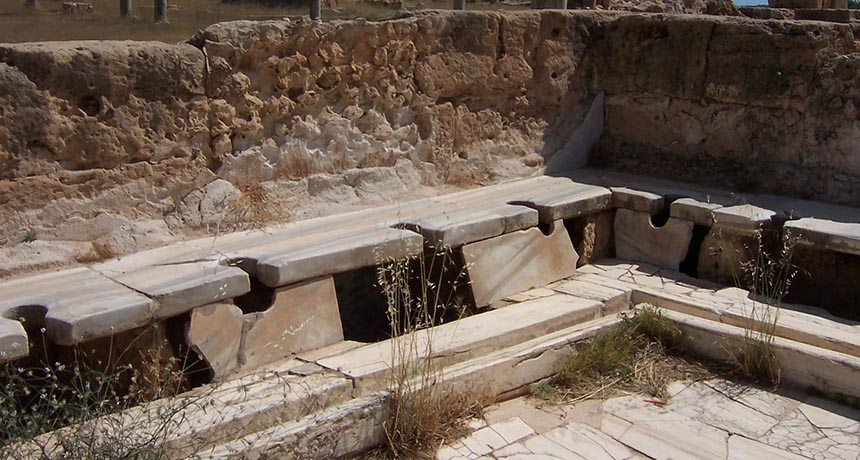Roman toilets didn’t flush parasites

The Roman Empire is credited with spreading sanitation technology, such as these latrines in Libya, throughout their realm.
Craig Taylor

The Roman Empire is credited with spreading sanitation technology, such as these latrines in Libya, throughout their realm.
Craig Taylor